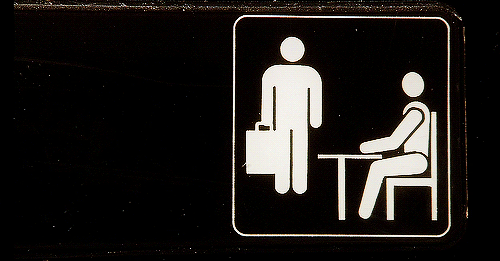Great news! Our coalition partners at the Center for Environmental Health just released an amazing report on flame retardants in the office and easy ways to avoid them. We figured you might have some questions, so we have provided an easy guide to understanding the report with some help from the characters from NBC’s hit TV show The Office. It’s time to get toxic chemicals out of the office.
What are flame retardants?
Flame retardants are chemicals that come in two primary categories—halogenated and organophosphorous. Halogenated flame retardants consist of chlorine or bromine atoms bonded to carbon atoms, while organophosphorous flame retardants are phosphorous atoms bonded to carbon atoms. They are used in numerous common household and office products including electronics, insulation, foam, wire, and cable intended to decrease the products’ flammability. However, recent studies have shown that flame retardants may do more harm than good.
How did they get into furniture in the first place?
In the 1970’s, house fires caused by cigarettes were a major concern. To prevent this, legislators pressured the tobacco industry to manufacture self-extinguishing cigarettes. Instead, the tobacco industry and chemical manufacturers convinced government officials that it was not the cigarettes, but the household furniture that was the problem. The legislators were convinced, and thus, flame retardants were incorporated into consumer products used in the home and the office. Recent tests say that a whopping “85% of couches tested contained toxic or untested flame retardants.”
But aren’t flame retardants a good thing?
No! The problem with flame retardants is that they do not chemically bind to the materials they are incorporated in. Because of this, they can easily leach out of products and be ingested or inhaled. Flame retardants have been linked to many “serious health problems including cancer, reduced IQ, developmental delays, obesity, and reproductive difficulties…and have been found in 97% of all Americans tested.”
Those are scary statistics—especially because flame retardant chemicals do not even fulfill their purpose of preventing fires in furniture. The Consumer Product Safety Commission found that products with flame retardants “did not offer a practically significantly greater level of open flame safety” than untreated products. In fact, they can even make fires harder to survive. When furniture with these chemicals catches fire, the furniture emits toxics such as carbon monoxide, soot, and smoke. Exposure to any of these can lead to unconsciousness and death.
Has anything been done about flame retardants in our office products?
Fortunately, a new law went into effect in California in January 2014, so manufacturers are no longer required to include flame retardants in their products. Additionally, in January 2015, labels on furniture became required in California so that consumers could identify whether the products they were purchasing contained flame retardants. However, more legislative action across the nation must be taken against flame retardants in order to ensure more comprehensive public health and safety.
What are the incentives for eliminating flame retardants?
- Flame retardant-free furniture is cost neutral or may even be less expensive and provides adequate fire safety.
- Flame retardants are associated with serious health.
- Flame retardant-free furniture is more durable and comfortable.
- It should be consistent with your job’s commitment to safety, health, and sustainability.
- It can demonstrate your company/business/organization’s leadership and puts your company in the same league of forward-thinking companies such as Facebook, Genentech, Kaiser Permanente, and more.
Sounds like a pretty good deal to me!
How do I reduce my own risk of exposure at the office?
To immediately reduce your risk of exposure to flame retardants in the office, minimize contact with dust. You can easily do this by washing your hands, cleaning surfaces, and opening windows frequently. You can also purchase and replace your old home or office furniture with flame retardant-free products.
How can I help kick flame retardants out of the office for good?
- Request a free webinar
- Spread the word—forward this guide to your colleagues, partners, vendors, and friends.




